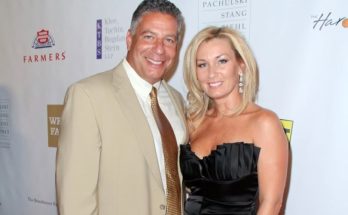Patrick Peterson: A Reflection on His Time with the Arizona Cardinals and an Unfinished Legacy in the Desert
When NFL fans hear the name Patrick Peterson, they immediately think of elite cornerback play, lockdown coverage, and highlight-reel interceptions. For a decade, Peterson patrolled the Arizona Cardinals’ secondary with a rare blend of athleticism, intelligence, and tenacity. Drafted fifth overall in the 2011 NFL Draft, he quickly became one of the league’s premier defensive backs and the face of a franchise struggling for consistency. While his time with the Cardinals ultimately came to an end in 2021, his legacy remains deeply intertwined with the red and black of the desert.
This is a story not just of statistics and Pro Bowl nods, but of leadership, perseverance, and what it means to wear the jersey of a team that helped shape your identity.
A Dream Begins in the Desert
Peterson arrived in Arizona with lofty expectations. A standout at LSU and a unanimous All-American, he was already being touted as the next shutdown corner in the NFL. The Cardinals selected him in the top five with the hope that he could become a foundational piece of their defense—and he delivered immediately.
In his rookie year (2011), Peterson made an instant impact not just as a cornerback, but as a dynamic return man. He tied the NFL record for most punt return touchdowns in a single season with four, including a jaw-dropping 99-yarder in overtime against the Rams. That moment served as an emphatic announcement: Patrick Peterson had arrived.
Peterson was named to the Pro Bowl in each of his first eight seasons, an incredible feat that showcased both his consistency and his status among the NFL elite. He quickly earned a reputation as a true shutdown corner—quarterbacks often hesitated to throw his way. His ability to shadow the opposing team’s No. 1 receiver, play physical press coverage, and still recover with elite speed made him one of the league’s most feared defenders.
Cementing a Legacy
By the mid-2010s, Peterson had fully established himself as the leader of Arizona’s defense. In 2015, the Cardinals had one of their most memorable seasons in recent memory, finishing 13-3 and reaching the NFC Championship Game. Though they fell short against the Carolina Panthers, the run remains a high point in franchise history, and Peterson was at the heart of it.
Peterson’s numbers never told the full story. Sure, he tallied 28 interceptions and over 90 passes defensed in his Arizona tenure, but his true value lay in his ability to take away an entire side of the field. He enabled Arizona’s defensive coordinators to be creative with blitzes and coverages because they trusted Peterson in man coverage—one-on-one, with no help.
His battles with the likes of Calvin Johnson, Julio Jones, Odell Beckham Jr., and Mike Evans became must-watch matchups. Peterson never shied away from the challenge. He relished it. His confidence bordered on swagger, but it was always backed up with performance.
Adversity Strikes
No great career goes untouched by adversity. For Peterson, that came in 2019 when he was suspended six games for violating the NFL’s performance-enhancing drug policy. The suspension shocked fans and cast a shadow over his previously pristine career.
Peterson later admitted that he was managing a health issue and had taken a substance he didn’t realize was banned. The incident served as a humbling moment for the veteran. Though he returned later that season and continued to play well, the relationship between Peterson and the Cardinals’ front office began to shift.
Trade rumors began to swirl. Frustrations over contract discussions bubbled beneath the surface. Peterson, once the beloved franchise cornerstone, seemed unsure about his future with the only team he had ever known.
The Departure
In March 2021, the inevitable became official. Patrick Peterson signed with the Minnesota Vikings in free agency, ending his decade-long run with the Cardinals. For fans, it was a bittersweet moment. Some felt the team should have done more to retain one of its all-time greats. Others acknowledged that both sides needed a fresh start.
Peterson’s exit didn’t come with bitterness or anger—at least not publicly. He spoke fondly of his time in Arizona, thanking the organization, the fans, and his teammates. But it was clear that part of him felt unfulfilled.
“I’ll always have love for Arizona,” he said in his farewell. “That’s home to me in so many ways. I grew up there. But sometimes, a new chapter is what’s needed.”
Reflections from the Sidelines
In the years since leaving Arizona, Peterson has taken every opportunity to reflect on his time in the desert. He’s spoken on podcasts, in interviews, and even through his own media platforms about what those ten seasons meant to him.
He often talks about the bond he had with Larry Fitzgerald—another Arizona icon—and how their leadership helped define a locker room culture that was resilient even during losing seasons. Peterson also frequently credits former defensive coordinator Todd Bowles for helping him grow intellectually as a cornerback.
“I wasn’t just playing off instinct anymore,” Peterson recalled. “I started understanding route trees, offensive tendencies, how to bait a quarterback. That’s what Bowles brought out of me.”
He also shared how much it meant to him to be embraced by the Phoenix community, becoming not just a football player, but a role model for local kids. His involvement in charity events, youth football camps, and holiday drives became a hallmark of his off-field legacy.
The “What Ifs” of a Cardinals Career
It’s impossible to reflect on Peterson’s Arizona tenure without considering the “what ifs.” What if the Cardinals had paired him with a more consistent pass rush early on? What if the offense hadn’t gone through constant quarterback changes between the Kurt Warner and Kyler Murray eras? What if 2015 hadn’t ended in a blowout loss in the NFC Championship?
Those questions linger because Peterson’s individual excellence often outpaced the team’s overall success. He gave his best years to a franchise still finding its identity. And yet, in many ways, that’s what makes his contribution all the more significant.
Peterson didn’t chase rings. He didn’t demand trades. He stayed, he led, and he set the standard for professionalism even when the wins didn’t come. His impact was foundational.
A Mentor in the Later Years
Peterson’s move to Minnesota and later Pittsburgh has seen him take on a more mentorship-focused role. He’s no longer the same blazing speedster he was in 2011, but his football IQ and ability to teach younger players have proven invaluable.
And yet, Peterson hasn’t officially closed the door on Arizona.
In several interviews, he’s hinted at the idea of returning to the Cardinals for a ceremonial one-day contract to retire with the team that drafted him. “I’d love to come back and retire as a Cardinal. That’s where my heart is,” he said in late 2024. “It’s where I became a man.”
An Unfinished Legacy
For many Cardinals fans, Peterson will always be the cornerback of the modern era. He’s in the conversation for greatest defensive player in franchise history, and some argue he belongs on the NFL’s Mount Rushmore of corners from the 2010s.
But there’s an unfinished quality to his Arizona story.
He never got to play in a Super Bowl with the Cardinals. He never got that final send-off in front of the home crowd at State Farm Stadium. And maybe, just maybe, that’s why the story doesn’t feel quite complete.
Could there be a final chapter? A ceremonial return? A role in the organization? Time will tell. But what’s certain is that Peterson’s imprint on the Cardinals is indelible.
The Legacy Left Behind
Peterson’s legacy in Arizona is marked by more than just numbers. He gave the Cardinals a swagger they hadn’t had in years. He gave fans a reason to believe that no matter how bleak things looked, they had a superstar on the field who could change the game in an instant.
He was the total package: speed, technique, instinct, leadership. He inspired the next generation of corners—players like Jaire Alexander, Trevon Diggs, and Sauce Gardner have all cited Peterson as a player they watched closely growing up.
Peterson also changed the perception of the Cardinals organization during a pivotal time. When he arrived, they were still shaking off the residue of inconsistency. When he left, they were viewed as a team with a future—something he helped build.
Looking Ahead
As Patrick Peterson nears the twilight of his career, thoughts naturally drift toward Canton, Ohio. With eight Pro Bowl selections, multiple All-Pro nods, and a decade of dominance, he has a strong case for enshrinement in the Pro Football Hall of Fame.
But long before he steps onto that gold jacket stage, the desert will remember him. Not just as a great player, but as a symbol of hope and excellence during a period of transition.
If there’s ever a Patrick Peterson Day at State Farm Stadium, expect thousands to show up—not just to cheer, but to say thank you.



